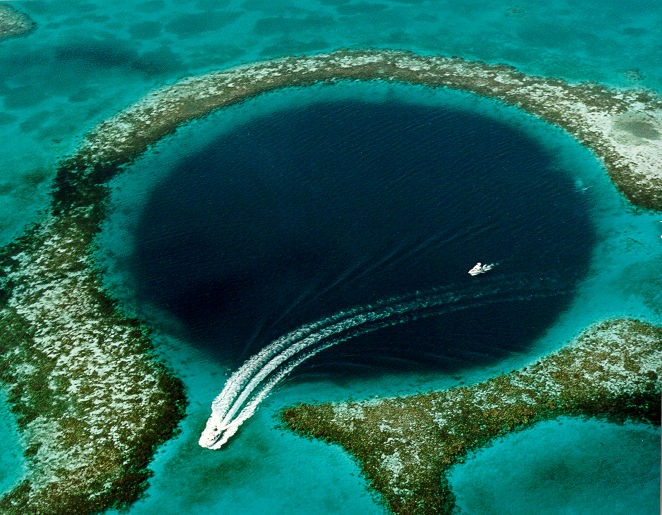The extraordinary natural phenomenon called blue holes
Blue holes give rise to rich biodiversity
The blue holes also called marine dolines are phenomena related to the remains of the ice age. The retreat of the sea in front of the limestone expanses formed holes which were then filled and taken in depth by rainwater and global warming.
They are recognizable by their dark blue disc-shaped colors and their surroundings of turquoise blue water. This contrast visible to the naked eye is explained by the depth of the water.
Among the most popular :
– The Dragon Hole in China (The largest with a depth of more than 300 meters).
– The blue hole of Dahab in Egypt (One of the most known by its dangerousness for amateur divers).
– Dean’s Blue Hole in the Bahamas (One of the deepest with a depth of 202 meters).
– The Belize hole in Central America (The oldest).
– The Green Banana Hole near the coast of Florida (Currently under exploration).
– The Amberjack hole in Florida (Exploring in 2019).
– The holes of the Andros Islands in the Caribbean with more than 170 estimated blue holes.
These are very well known places for snorkeling or scuba diving .
For us, aquarists, they have an interesting particularity: they contain a rich biodiversity with marine mammals but also corals, molluscs, turtles…
They are also important for scientific research in the analysis of life inside and its mechanisms.
Thanks to a study conducted a year ago on the Trou de la Sériole, we know that there is a high density of microorganisms and decomposing organic matter at the bottom of the hole but also a high density of nutrients at the surface. This would help promote biodiversity as an oasis of life in the ocean.

